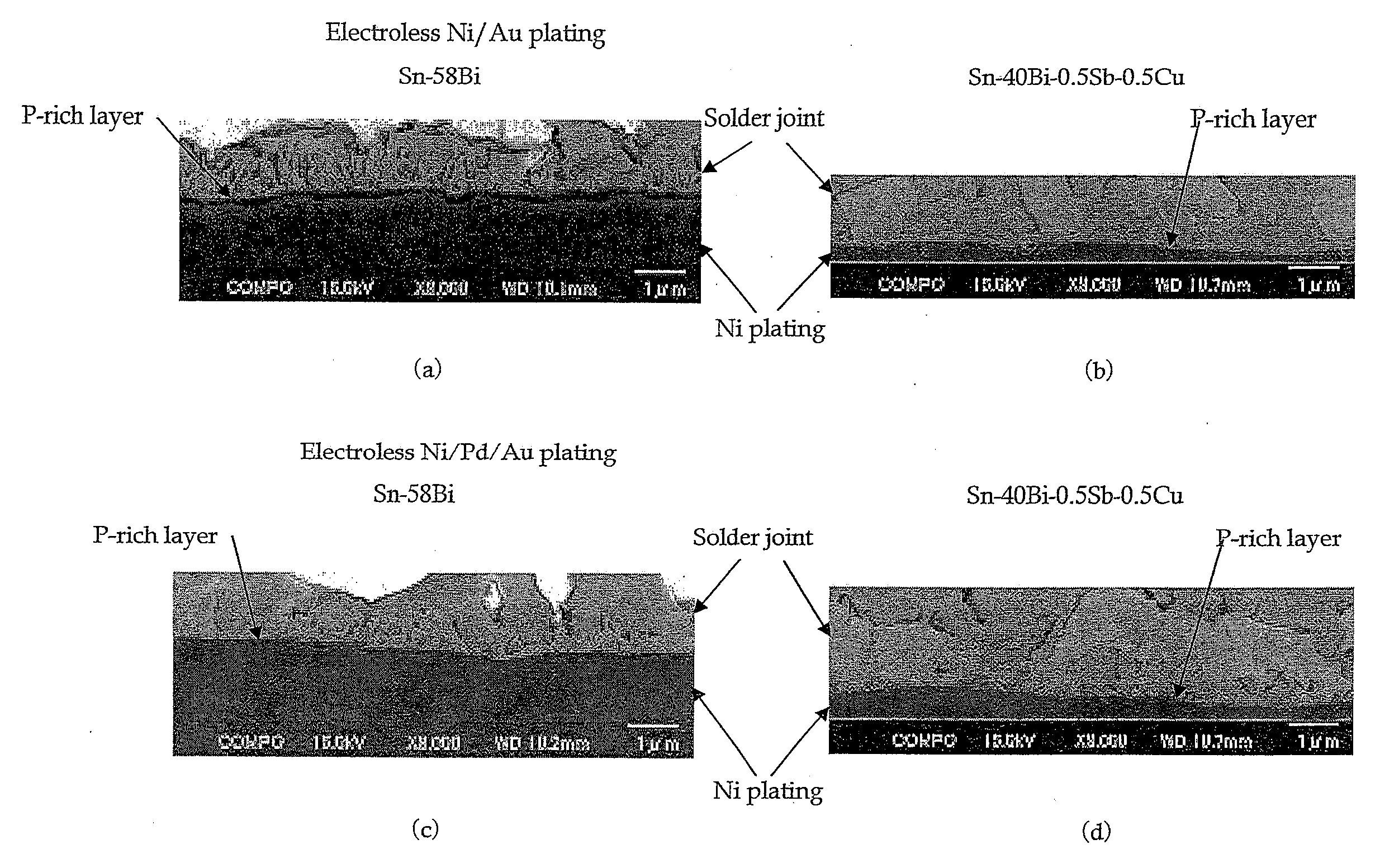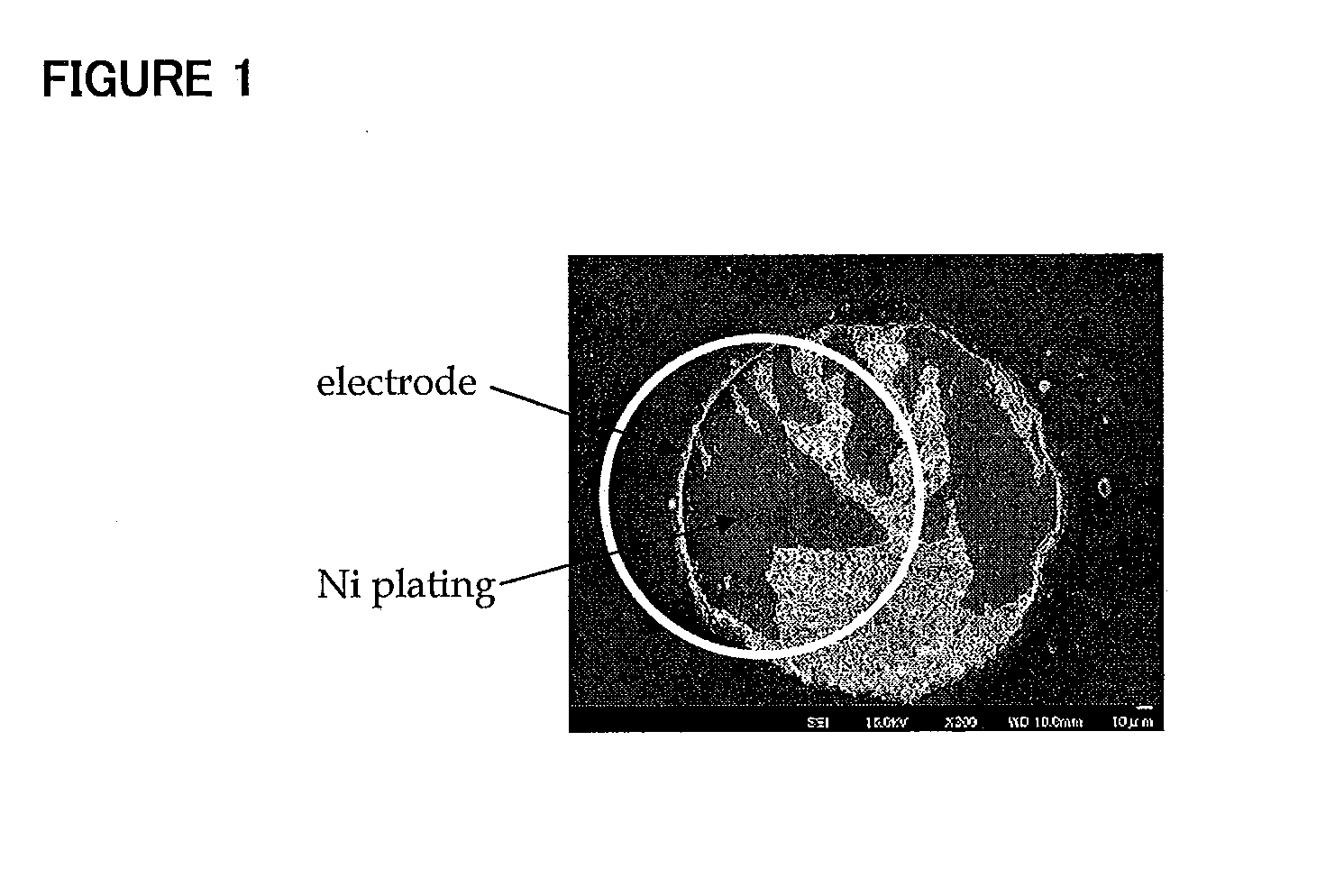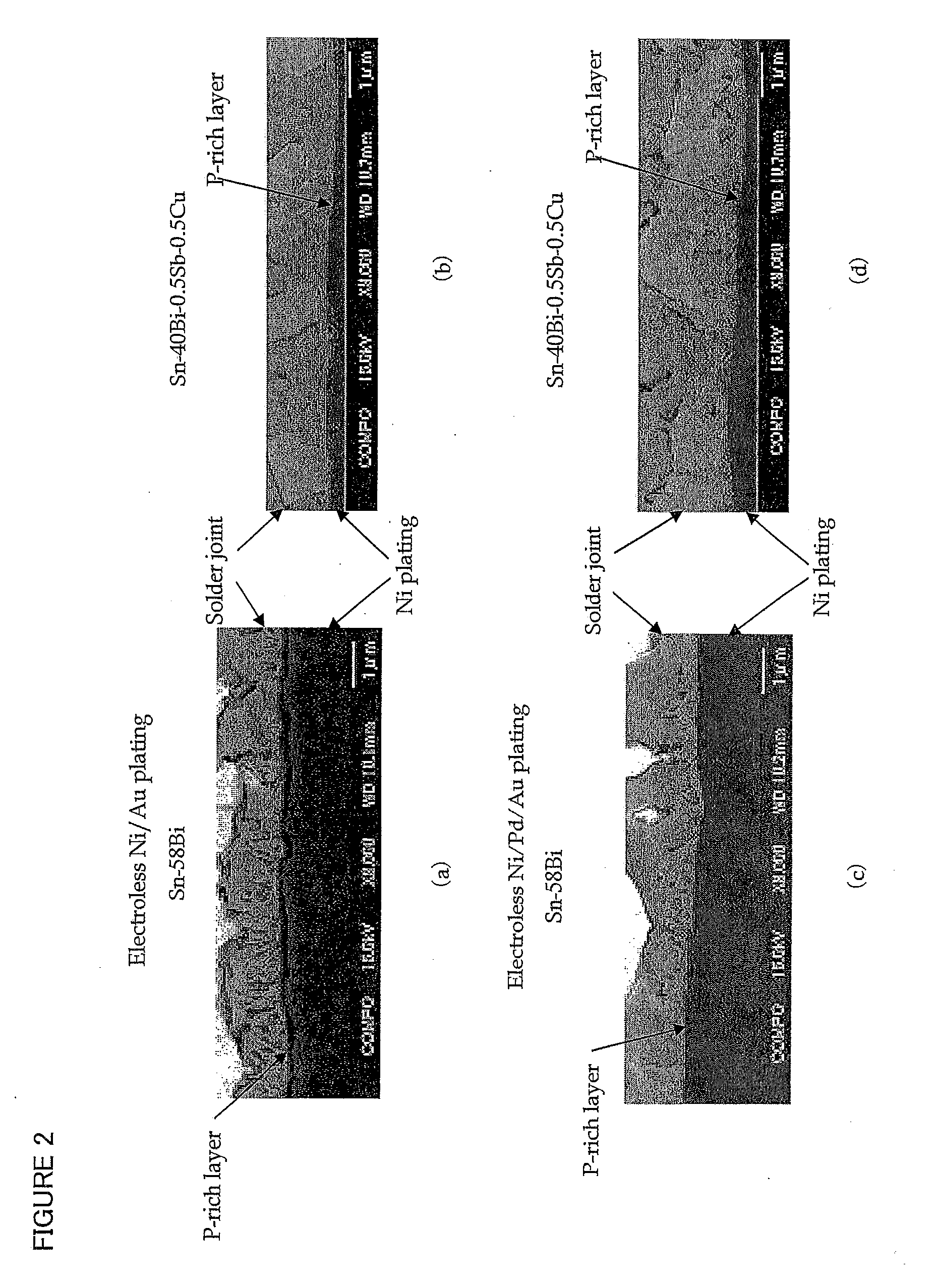Lead-Free Solder Alloy
- Summary
- Abstract
- Description
- Claims
- Application Information
AI Technical Summary
Benefits of technology
Problems solved by technology
Method used
Image
Examples
examples
[0044]The solder alloys having compositions shown in Table 1 were prepared. The melting point, the tensile strength, the elongation (ductility), the thickness of a P-rich layer, the shear strength, and the percent exposure of plating were determined for these solder alloys as described below. The results are also shown in Table 1.
Melting Point of the Solder Alloy
[0045]The melting point (° C.) of each solder alloy was measured using a differential scanning calorimeter (DSC) (Model DSC 6200 of Seiko Instruments, Inc.) at a rate of temperature increase of 5° C. per minute.
Tensile Strength and Elongation (Ductility)
[0046]The solder alloys having compositions shown in Table 1 were formed into test specimens for a tensile test, and the tensile strength (MPa) and the elongation (%) of the specimens were measured using a tensile strength tester (Auto Graph AG-201kN manufactured by Shimadzu Corporation) at a stroke speed of 6.0 mm per minute and a strain rate of 0.33% per second. A solder al...
PUM
| Property | Measurement | Unit |
|---|---|---|
| Fraction | aaaaa | aaaaa |
| Fraction | aaaaa | aaaaa |
| Fraction | aaaaa | aaaaa |
Abstract
Description
Claims
Application Information
 Login to View More
Login to View More - R&D Engineer
- R&D Manager
- IP Professional
- Industry Leading Data Capabilities
- Powerful AI technology
- Patent DNA Extraction
Browse by: Latest US Patents, China's latest patents, Technical Efficacy Thesaurus, Application Domain, Technology Topic, Popular Technical Reports.
© 2024 PatSnap. All rights reserved.Legal|Privacy policy|Modern Slavery Act Transparency Statement|Sitemap|About US| Contact US: help@patsnap.com










